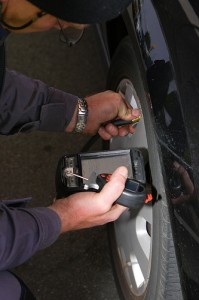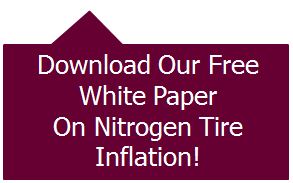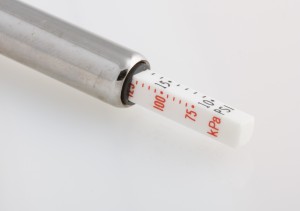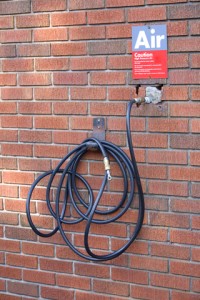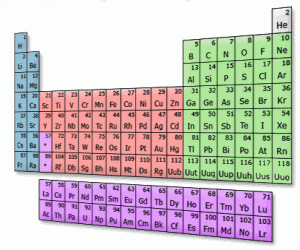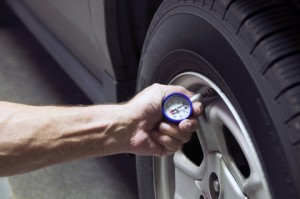 We came across two articles about gas saving myths and gas saving tips, and both article recommended that keeping tires as maximum tire pressure is best for fuel efficiency. Although the articles are correct that overinflation and underinflation are harmful, the idea of maximum tire pressure could be misleading. Here’s why:
We came across two articles about gas saving myths and gas saving tips, and both article recommended that keeping tires as maximum tire pressure is best for fuel efficiency. Although the articles are correct that overinflation and underinflation are harmful, the idea of maximum tire pressure could be misleading. Here’s why:
The Number on the Sidewall
Many mistakenly believe that the number on the sidewall is the recommended tire pressure for the tire. This is false, as the number is the maximum tire pressure the tire can handle, according to the manufacturer. For the recommended tire inflation pressure, check the label located on the driver’s door or the owner’s manual. This is why the idea of keeping tires at maximum tire pressure can be misleading. Maximum tire pressure is overinflation, as it’s not recommended. The pressure label on the tire also does not indicate the manufacturer’s recommended tire inflation pressure, nor does it indicate the proper air pressure based on the vehicle the tire is mounted on.
If You Have Road Noise or an Extra Bumpy Ride, Your Tires aren’t at Proper Tire Pressure
The articles also state that with maximum tire pressure, you’ll have a bumpier ride and a bit more road noise, but you’ll also have the improved fuel efficiency so it’s a nice trade-off. This is also not true, because bumps and noise means that your tires aren’t at their proper tire pressure, so you are probably wasting gas instead of operating at top fuel efficiency. This is because tires that are over- or underinflated do not have the right contact with the road, destroying your tires and ruining your fuel inefficiency. The picture below demonstrates this phenomenon, where it’s obvious to see that without proper tire pressure, no aspect of your tires or your driving (which includes fuel efficiency, handling, tire life etc.) is at its best.
What’s the Right Tire Pressure for Optimum Fuel Efficiency?
The proper tire pressure is what’s recommended, which as can be found in the owner’s manual or on the driver’s door (as previously stated). Do not go by the sidewall or your friend’s recommendation or what you feel is the right tire pressure. It’s also important to check your tire pressure regularly, and to make those checks when your tires are cool, so not right after you’ve come home and certainly not at the air pump at the gas station. You will have a more accurate reading when your tires are cool.
The best way to maintain proper tire pressure and to have optimum fuel efficiency is with nitrogen tire inflation. Nitrogen-filled tires maintain proper tire pressure for longer periods of time, which means you get that fuel efficiency boost without that bumpy ride and without overinflating your tires. Of course, nitrogen-filled tires still need to have their pressure checked regularly. Sure, they may take longer to lose their pressure, but that doesn’t mean that they never, ever lose it.
What’s the True Tire Pressure/Gas Saving Tip?
The accurate gas saving tip is to make sure that your tires are at proper tire pressure, the one that is recommended in the owner’s manual or on the driver’s door. You don’t ever want to be at maximum tire pressure, and you certainly don’t want to be using tires that are worn. Also, make it a habit to check your tire pressure regularly, and get nitrogen-filled tires if you can.


